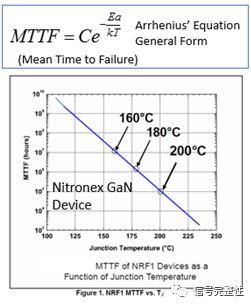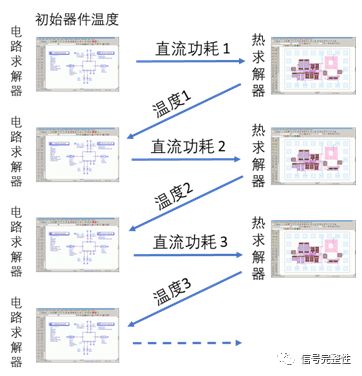Studies have shown that the reliability of electronic devices is directly related to the temperature of the device. Taking GaN devices as an example, the device's mean time to failure (MTTF) drops by an order of magnitude for every 20 degrees increase in device temperature. And we know that the MTTF indicator of mobile phones is generally 104 hours, and the MTTF indicator of mobile communication base stations is generally 106 hours. It can be seen that by controlling the temperature of the device, the reliability of the device can be effectively guaranteed.

For a microwave/millimeter wave chip (MMIC) power amplifier, temperature not only affects the reliability of the power amplifier, but also directly affects the electrical characteristics of the power amplifier. Too high temperature will cause the performance of the power amplifier to deviate from the design index, thereby affecting the performance of the entire system.
The temperature of the MMIC power amplifier depends on the DC power dissipation of the power amplifier, the thermal conductivity of the MMIC material, the location of the device, the device packaging material and the thermal conductivity of the circuit board material. Thermal design engineers can use professional thermal analysis software to perform thermal simulation based on the DC power dissipation of the device, the thermal characteristics of the material, and the layout information to obtain the temperature characteristics of the entire structure. The DC dissipation power of the power amplifier needs to be obtained through a circuit simulator according to the DC bias characteristics of the device and the temperature of the device. In this way, if you want to get the real temperature of the power amplifier, you can't get it through a simulation.

It can be seen that such simulation is a process of continuous iterative solution. Until the balance of temperature and DC power consumption is reached, the temperature of the power amplifier can be obtained correctly. If you use independent thermal simulation software and circuit simulation software, you need to manually exchange a lot of data in the iterative process.
The electrothermal analysis tool integrated in the ADS software design environment forms a unique MMIC electrothermal simulation result by comprehensively considering various factors such as device temperature, thermal coupling effect, package thermal characteristics, and layout layout.
Different from traditional thermal simulation software, the electrothermal simulator in ADS software is fully integrated in the ADS circuit design environment. The traditional independent thermal simulation software needs to import the layout and set the heat source according to the DC dissipation power obtained by the circuit simulation. The electrothermal simulator in the ADS software uses the DC power consumption data obtained by the circuit simulator and the device position information obtained from the layout, combined with the material thermal characteristics parameters provided in the process device library, to perform three-dimensional thermal analysis of the MMIC. The thermal simulator will perform collaborative iterative calculations with the circuit simulator. The thermal simulator will automatically transfer the updated temperature data back to the circuit simulator, and then feed back the power dissipation results obtained by the circuit simulation to the thermal simulator. After several cycles of iteration, until the heat distribution converges. Since circuit simulation and thermal simulation are in the same design environment, manual data exchange is not required, and the simulation speed is fast and the accuracy is high.

The electrothermal simulation function of ADS software allows circuit design engineers to quickly understand the changes in the circuit performance of the designed MMIC chip when the device is heated, and at the same time obtain the temperature characteristics of any position of the MMIC chip and the thermal topography of the chip.
The electrothermal simulator in the ADS software can be used with the simulators of all circuits in ADS-including harmonic balance simulators, transient simulators and envelope simulators.
The electrothermal simulator of ADS software also supports thermal layout design. Before the layout design, use the thermal layout function, place the heating device position, input the parameters such as DC dissipation power, and quickly obtain the thermal distribution characteristics of the entire structure, and guide the layout layout.

Circuit design engineers use ADS software electrothermal simulation function to simulate the performance of the chip under heating conditions, and can further combine packaging and circuit board design to more accurately understand the working performance of the chip and analyze potential problems in the chip design in time. Use the heat distribution topography in the electrothermal analysis results to cooperate with process and structural engineers to improve the heat dissipation conditions and improve the reliability of the chip.
In the hot summer, you should also try to simulate the temperature of the MMIC amplifier in the ADS software!
Fiber Optic Field Connector,Fiber Optic Accessory,Optical Fiber Accessories,Optical Fiber Accessory
Huizhou Fibercan Industrial Co.Ltd , https://www.fibercannetworks.com